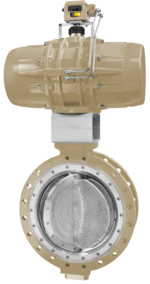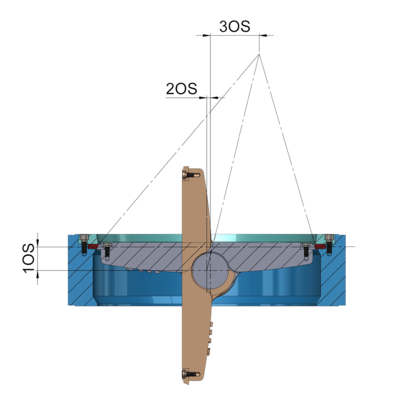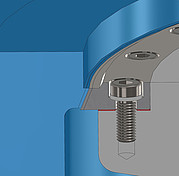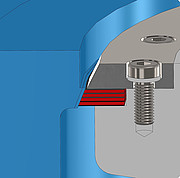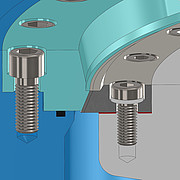Triple Offset Control and Shut-off Butterfly Valves

Advantages
- At the slightest rotary motion, the seal is lifted off the body seat, which means that there is no transition from static to kinetic friction between the seat and conical seal geometry.
- The conical seal shape prevents the butterfly disk from getting jammed.
- The control and shut-off butterfly valve can be used for both directions of flow:
- FTC = flow-to-close (the medium helps to close the disk)
- FTO = flow-to-open (the medium helps to open the disk)
- The seat's conical shape ensures maximum shut-off performance even at extreme temperature fluctuations and pressure peaks.
- The valves have an extraordinarily long service life since they open and close almost without friction and mechanical initial breakaway torque.
- Thanks to their patented disk profile (patent no. DE 10 2012 102 4720 A1), the control and shut-off butterfly valves are also suitable for use in supercritical processes.
Triple-offset design principles
Offset between the center line of the shaft and seat ring
The shaft is mounted completely behind the facing of the disk and seat. The result is one continuous, uninterrupted facing. This provides a tight shut-off to be achieved as there are no more transitions between disk and shaft in the sealing area.
Offset between the center lines of the shaft and body
The shaft is positioned with a slight offset from the center line of the body. This gives the butterfly valve a flow-to-close (FTC) and a flow-to-open (FTO) closing direction. If the butterfly valve is installed in the standard FTC direction, the process medium helps keep the disk shut and press it into the conical seat.
Offset of the axis of the seat to the center line of the body
The beveled conical seat geometry allows for an almost frictionless rotary motion and reduces wear and tear when the valve is opened or closed. Breakaway torque caused by deformation can be ruled out. The conical facing ensures strict seat leakage requirements can be met.
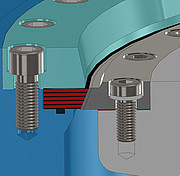
Series 2 (LEUSCH standard)
The seat (labyrinth seal, 4) inside the body, which is protected against the medium flow directly into it, and the solid seat ring (3) can be replaced as the retaining ring (5) is removable.
- Best solution for critical applications, such as control involving strict seat leakage requirements
This might also interest you
Subsidiaries
Positioners
Executive Board
Vocational training
Pilot valve
Valve accessories
Media
Solenoid valves
FDI
SAM TANK MANAGEMENT
Self-operated regulators
Careers
Lock-up valve
Sales offices
Headquarters
Hook-ups
Automation
SAM DISTRICT ENERGY
Hydrogen
Commitment
Limit switch
Quick exhaust valves
Service
Digitalization
Industry 4.0
Automation systems
Supervisory Board
Actuators
Conference
SAM LAN
SIL
Supply pressure regulators
SAM DIGITAL
MainChange
Volume boosters
Valves
Control valves
Seminars
Globe valves
SAM GUARD
Differential pressure meter
